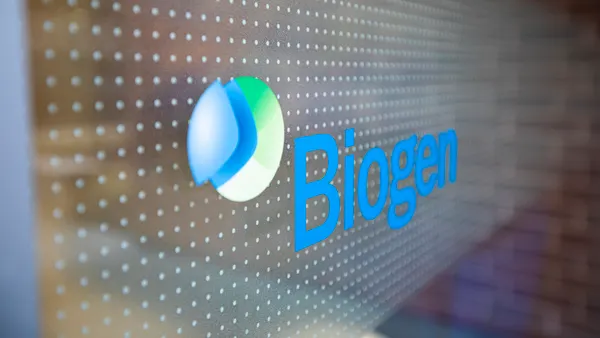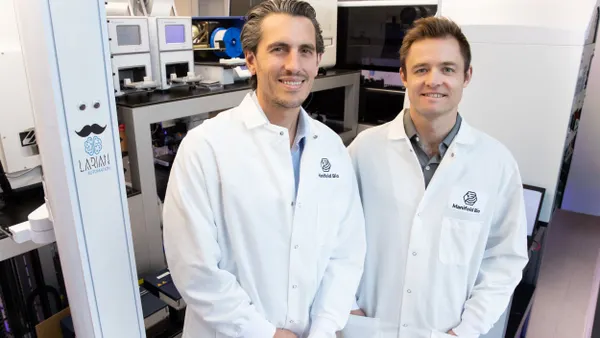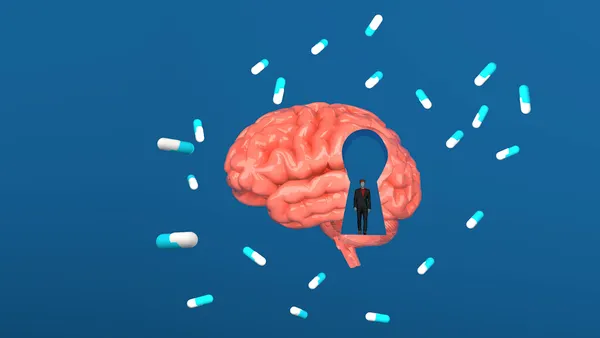Dear Diary Unlocking the Patient Experience in Real Time By Denise Myshko Patient diaries As cost and implementation concerns over the use of hand-held electronic patient diaries begin to ease, companies are starting to recognize The potential for accessing patient feedback in real time. Electronic diaries can potentially provide better-quality data, faster time to data lock, and improved patient diary completion compliance. Pharmaceutical companies require feedback on products in the clinic – not only from the clinicians and physicians, but also from the end-users, the patients. Accurate patient assessments of treatment effects are an important gauge, especially when developing products for pain, gastrointestinal, and other indications where objective measures may not be enough to assess efficacy. Datamonitor estimates that between 25% and 30% of all clinical trials currently use patient diaries to collect patient self-report data. Paper diaries have been the standard tool for collecting such information. But paper diaries may not accurately reflect a patient’s symptoms or experience with a drug. Patients sometimes fill out the diaries after the fact or while waiting for their appointment with the doctor. Diaries may not be returned, or they may have missing or even extra information. Additionally, handwritten diaries can be difficult to read. A slow, but growing trend is the use of electronic hand-held devices to replace paper diaries. Datamonitor estimates that 3% of patient diaries used in clinical trials were electronic based, and researchers project that the percentage will likely increase to 7% by 2004 and 25% by 2007. Improving Data Gathering There are several types of electronic patient diaries (EPDs) available on the market. The most common systems are hand-held PDAs. There also are interactive voice recognition (IVR) systems and tablet PCs. Experts say electronic diaries can result in more accurate and timely data, as well as give validity to patient-reported outcomes. Compliance with paper diaries often is low, whereas electronic diaries, if used effectively, are expected to reduce problems associated with the paper method, resulting in more accurate data. In one study published in the British Medical Journal in May 2002, while 90% of patients reported they were compliant with their paper diaries, actual compliance was much lower. Only about 11% of those in the study completed a diary entry within the designated 30-minute window and only 20% completed the diary within a wider 90-minute window. And, most of the 40 patients in the study “hoarded” the paper diary; in other words, there were days when the diary binder was not opened, but for which diary cards were completed. “An awful lot of what appears to be complete data prove not to be when data managers begin to inquire into consistency and authenticity,” says Stephen Raymond, Ph.D., chief scientific officer and founder of PHT Corp. “Some patients don’t fill out the questionnaire, and others don’t complete the questionnaire properly. The date may not have the year or the day, or the date may be unreadable. That information may have to be disqualified.” Electronic diaries, Dr. Raymond says, easily address these issues. “We can do completion checks as the questionnaire is completed; once patients start the process, they can’t submit the information unless all of the required fields are filled in,” he says. “We can structure the alternatives in such a way that if the instructions say pick only one option, patients can only pick one. And the illegibility of dates isn’t an issue since patients are selecting dates instead of writing them in. The impact of these simple changes on data yield is incredible. Correct dates and completed questionnaires can mean an increase in the number of data fields that can be evaluated. Previously, maybe only 5,000 fields out of 10,000 fields were complete. Now sponsors may have 9,000 fields available to evaluate. Sponsors have almost doubled the yield without increasing the burden on the patient or the site.” Additionally, data are collected on time, says Barbara Marino, Ph.D., senior scientist at PHT. “Pharma companies no longer lose the opportunity of capturing an experience,” Dr. Marino says. “With an electronic device, sponsors can limit the time parameters during which subjects can enter data, so patients can’t enter data for yesterday’s experience or tomorrow’s experience.” Dr. Raymond says while restrictions on times for diary completion have the potential to limit the amount of data collected should a patient forget, in reality the opposite is true. “Once people know that someone is watching, we find that diary completion compliance goes up,” he says. EPD in Action The first drug to receive approval based on an electronic patient diary to collect the primary endpoint data was Allergan Inc.’s Acular LS for the reduction of ocular pain and burning/stinging following corneal refractive surgery. Acular LS was approved in June 2003. In these trials, invivodata Inc.’s EPD system was used to capture real-time data in Phase III pivotal trials immediately after corneal refractive surgery and for several days afterward. Patients were asked to make repeated real-time entries on the eDiary, which delivered more than 7,200 reports to help distinguish the results of the drug versus a placebo. “We worked very closely with Allergan’s clinical team to design an electronic diary that would give the company the real-time data needed to show that the drug was efficacious versus placebo,” says Michael R. Hufford, Ph.D., VP of scientific affairs at invivodata. “The FDA was very receptive to the use of electronic diaries to capture the primary endpoint data. We’ve been working very closely with our FDA colleagues in both CDER and the Bioresearch Monitoring group to orient them and give them a comfort level about the use of electronic diaries in clinical trials.” According to Michael J. Harte, senior VP of global sales for etrials Worldwide Inc., because data from EPDs are automatically recorded, regulators know if patients complete the diary on a daily basis and if the responses to the drug are accurate. “Overall the FDA likes that everything is time and date stamped, so the data are much more valid than what the agency would get on paper,” he says. Another early adopter is Adolor Corp., which recently completed a three-week trial with a two-week run-in and a two-week follow-up for a gastrointestinal product using a hand-held diary. The experience, while not without some bumps, was positive, says Maryann Cherubini, clinical program director at Adolor, and the company would consider using such a system in other trials in which a diary was appropriate. “There was more training required than anticipated, by both the vendor and by us with the site personnel and the patients,” she says. “We found – and this was true for most of the sites – that somebody had to sit with coordinators and go through the process with them on their particular computer set-up. This seemed to make the biggest difference. Although paper diaries are reliable clinical instruments, electronic diaries are an improvement on this reliability.” Closely related to data integrity is security of information, says Jean Paty, Ph.D., founder and chief quality officer of invivodata. “Unlike paper, electronic systems and processes can provide a high degree of data security in ways that aren’t even visible to users of those systems,” Dr. Paty says. “As a result, people imagine all kinds of ways in which electronic systems can be tampered with. While in fact those very systems, properly designed and implemented, can be essentially tamper-proof, or at least tamper-evident. “The FDA says electronic systems have to be at least as reliable as paper and any data-collection systems must have data integrity,” he says. “Companies must be able to demonstrate that when a subject records a data item, for example, a pain rating, a blood-glucose value, or an incontinence episode, the FDA can trace that data all the way back to its point of origin.” Costs and ROI Much of the cost of paper diaries involves the expensive and time-consuming query process. Out-of-range and extraneous data that were scribbled in diaries must be entered into the database and then queried back to the site. “If the data are not entered right the first time, it’s difficult to go back and ask patients how they felt 30 days ago,” Mr. Harte says. “Electronic diaries provide a lot more validity to the responses.” According to Serge Bodart, CEO of Symfo, paper diaries cost about $200 to $250 per patient. “This involves not only the cost of paper but also the cost of designing the diaries, processing the paper afterwards, collecting the diaries and data, and double encoding the data,” he says. “According to a CenterWatch study, the cost per query is at least $80. By eliminating just three or four queries, that’s the price of an EPD.” The upfront expense to purchase or lease the technology had been the biggest cost associated with electronic diaries. Over the last year the prices of electronic devices have decreased, says Rick Piazza, Pharm.D., VP of product strategy at etrials. “A year and half ago, we couldn’t find anything for less than $400,” he says. “Now, devices cost less than $200. As the prices come down these diaries are becoming more attractive to sponsors.” Carl Yankowski, CEO of CRF Inc., says price shouldn’t be the only consideration. “If a company can get a drug to market faster and get a return on R&D investment, that should be factored into the total cost,” he says. Dr. Hufford says ROI with electronic diaries goes beyond the efficiency of ensuring clean, in-range data. “We recently used electronic diaries to capture real-time data from 1,100 patients in a Phase III pivotal trial,” he says. “We compared the data we received using our system with a previous Phase II trial of the same compound using paper diaries. We found that by capturing real-time data and eliminating recall bias, we were able to significantly increase the statistical power, or sensitivity, of that Phase III trial, so much so that the company is going to be able to run its next Phase III trial with half the number of subjects, reducing enrollment time by an estimated eight months. This equated to a 2,900% return on the company’s initial investment. This is a very compelling ROI argument.” P. Alex Derchak, Ph.D., director of clinical development at VivoMetrics Inc., says cost effectiveness analyses are far more complex than a simple measure of cost. “When doing a cost-effectiveness analysis, all of the costs have to be sorted, as well as all of the benefits of both choices,” he says. “Then there has to be some indexed score of cost-per-output. Evaluating cost effectiveness is not a simple analysis.” A Growing Market While the electronic diary market is still in its early stages, with few players, especially when compared with EDC, EPD companies are beginning to break away from the pack. Industry experts say the use of electronic diaries will increase in the next few years. Datamonitor predicts that the market size, currently estimated at $25 million, is likely to increase to more than $300 million by 2005 as the penetration of EPDs increases. Additionally, as the baby-boomer population ages, demand for quality-of-life medications, which usually involve patient self-report data, will expand. Pipelines are likely to reflect this demand and the use of patient diaries will increase. At PRA International Inc., electronic diaries increasingly will be offered as an alternative to paper-based diaries. “In the past several years, EPDs have become more important to PRA and our sponsors,” says Jason M. Packwood, product director, clinical-data management, at PRA. “I expect that within the next few years, EPDs will replace the practice of using IVR systems for collecting patient-diary data.” He points out that it is always important for a sponsor or CRO to include EPD vendors as a part of the clinical-project team. “All processes, on-site and in-house, must be well-defined and understood by the project team before system implementation,” Mr. Packwood says. “It is especially important to map out cross-functional processes and workflows. Also, it is critical that training and help-desk support processes are well-defined before the investigator meeting and site initiation.” Dr. Raymond says pharma seems to be fairly confident about the reliability of diary technology, but there are still concerns. “Anytime companies apply a new technology to a clinical study, it’s a dicey decision,” he says. “The stakes are very high. Trials are complex organizational efforts so people are naturally conservative about implementing a change in the process.” Pharmaceutical companies, Mr. Yankowski says, need a clear internal champion of technology, someone who cuts across disciplines. “Pharmaceutical companies have huge investments in people and infrastructures based on paper,” he says. For the sites, workload is an important factor in adopting a system. A 2002 survey of 355 investigative sites by CenterWatch and Clinical Data Interchange Standards Consortium (CDISC) found that 41% of respondents said EPDs reduce their workload, 47% reported the same workload, while 12% said EPDs increased the workload. Sometimes the sheer number of systems that site personnel have to use can lead to additional work, at least initially. “The diary piece is just one part of the clinical-data streams that sites are responsible for,” says James D. Utterback, president of the pharmaceutical division at VivoMetrics Inc. “Sites are responsible for case-report data, lab data, and now e-diary data. The plethora of all of these tools has created some hesitancy to adopt end-to-end e-clinical solutions at the site level.” Mr. Packwood also points out there is some skepticism from sites about electronic diaries. “E-diaries are perceived as a technophile’s toy rather than a proven, reliable, easy-to-use solution for capturing data,” he says. “But once investigators, study coordinators, and clinical-project teams gain experience with EPDs, they quickly become advocates for the technology.” a Patient connection While there is a comfort level with paper, experts say patients have expressed a growing preference for EPDs. “Patients have been marvelous,” Mr. Yankowski says. “We recently completed a study for a large pharma company and achieved a 97% compliance rate. Patients are not technophobic. Frankly I would argue that an e-diary probably is easier to use than shuffling around a bunch of paper. Everything is in one device as opposed to a page per day or whatever frequency is required.” Mr. Bodart says with EPDs, patients don’t have to remember that they had a symptom that needs to be recorded. “With an e-diary, it is easy to record a symptom or any other parameter in real time because patients would have the diary in their pocket,” he says. “This is key to the trial and key to good data.” Additionally, Ms. Marino says patients like the privacy of an electronic device. “We have found that patients prefer electronic over paper because the device is unobtrusive and private,” she says. “The information they were asked to collect was highly sensitive. They were comfortable with a device that made it possible for them to enter information in a way that no one else could see. With a paper diary, patients have a book, and the questions and answers are there for anyone to see.” Dr. Hufford says patient training is the key to success with any e-diary and that simply putting questions on technological device is not enough for patients to be compliant. “There needs to be a patient-centric approach where the user interface is incredibly simple and intuitive,” he says. “But, fundamentally, technology alone will not help patients succeed in providing real-time data. Approaching a 78-year-old prostate-cancer patient with a nifty device saying it has 8 megabytes of RAM and a touch-sensitive screen to report his symptoms isn’t going to work. There needs to be an understanding of the behavioral and cognitive science about how patients report on their subjective experience combined with sophisticated, robust technology to help patients succeed in providing real-time data.” Wireless and Beyond Industry experts say wireless technology is likely to be the next generation for electronic diaries. But the adoption of wireless technology is limited to the available infrastructure. The use of wireless electronic diaries is likely to penetrate the European market before the U.S. market, according to Datamonitor. Experts say there will likely be an integration of devices for recording patient-reported outcomes and those that measure physiological variables such as activity, body weight, blood pressure, and heart rate. “The goal is to get first-hand knowledge about the patient,” Dr. Raymond says. “Wearable sensors can communicate directly with the diary so that each diary report includes not only the subjective information but also a lot of physiological information about the patient.” At least one pharma company is looking at the use of such e-tools. GlaxoSmithKline funded a research study on chronic obstructive pulmonary disease (COPD) using VivoMetrics’ LifeShirt System for cough measurement. In this study, the LifeShirt – a wearable vest with embedded sensors that collect physiological data 24 hours a day, and 7 days a week, and that includes a patient-diary component – and video observation were used simultaneously to observe about 3,500 coughs. The LifeShirt was found to be 99% accurate in measuring cough when compared with video analysis, the current gold standard for cough measurement. “The LifeShirt is a second-generation product in that it provides integrated data of the patient’s subjective self report and physiological parameters,” Mr. Utterback says. “In the past, the ability to measure cough was done in two ways. One was to rely on the subject’s self report. Obviously, this is a difficult and very subjective perspective. The other way was to bring patients into the clinic. This involves the expense to videotape and use of microphones on an individual basis, plus additional labor/site costs. This is a very expensive solution for studies where cough is either an endpoint or a side effect.” Mr. Yankowski says over time there will be a meshing of EPDs, EDC, and clinical data-management systems that fit on top of a SAS system and statistical scrubbing routines. “We have to distinguish between nifty technology and technology that brings real value in terms of drug development,” Dr. Hufford says. “It takes thoughtful evaluation to determine whether a neat innovation provides value in the context of drug development.”F PharmaVoice welcomes comments about this article. E-mail us at [email protected]. Patients are quite receptive to technology. With an electronic diary, they just push a couple of buttons and record events in real time. That is the key to good data. Serge Bodart I expect that within the next few years, EPDs will replace the practice of using IVR systems for collecting patient-diary data. Jason Packwood I see electronic patient diaries as a key step in the progression toward capturing complete data from patients in their natural environment. Dr. Jean Paty I see electronic patient diaries as a key step in the progression toward capturing complete data from patients in their natural environment. Dr. Jean Paty Problem associated with paper patient diaries Opportunity for pharmaceutical companies to use electronic patient diaries (EPDs) I think almost all trials will include patient-reported outcomes information in the next two or three years. Dr. Stephen Raymond Certainly there are the questions about the expense and the acceptability to the end user, but as more and more literature comes out on the subject, interest from sponsors is growing. Dr. Rick Piazza success predicts success. Once companies have a successful experience and solid feedback from investigators, they spread the word across their global R&D teams. James Utterback Electronic diaries provide access to real-time data, which is a very big issue in terms of managing compliance by the patient and enhancing the validity of responses. Michael Harte According to an ex-pharmaceutical colleague the industry is “at least” 30 years behind adopting enterprise information technology to move from paper systems to electronic systems. Carl Yankowski Experts on this topic Serge Bodart. CEO, Symfo, Cambridge, Mass.; Symfo is an EPD solution provider and is dedicated to helping pharmaceutical, biotech, medical-device, and other healthcare companies optimize and accelerate the drug-development process. For more information, visit symfo.com. Maryann Cherubini. Clinical program director, Adolor Corp., Exton, Pa.; Adolor is a biopharmaceutical company that develops novel analgesics and other related therapeutics based upon recent advances in proprietary medicinal chemistry and recombinant receptor technology. For more information, visit adolor.com. p. Alex Derchak, Ph.D. Director of clinical development, VivoMetrics Inc., Ventura, Calif.; VivoMetrics provides continuous ambulatory monitoring products and services for the collection, analysis, and reporting of subjective and physiological data. For more information, visit vivometrics.com. Michael J. Harte. Senior VP, global sales, etrials Worldwide Inc., Morrisville, N.C.; etrials offers an eClinical platform for collecting, reviewing, and distributing quantitative subject information and educational resources for physicians and patients. For more information, visit etrials.com. Michael R. Hufford, Ph.D. VP, scientific affairs, invivodata Inc., Pittsburgh; invivodata combines behavioral science, information technology, and clinical expertise to capture clinical-trial data directly from patients. For more info, visit invivodata.com. Barbara Marino, Ph.D. Senior scientist, PHT Corp., Charlestown, Mass.; PHT provides mobile and Web technologies that help pharmaceutical companies simplify clinical trials by improving the process of collecting and managing accurate clinical-trial data. For more information, visit phtcorp.com. Jason M. Packwood. Product director, clinical data management, PRA International Inc., Charlottesville, Va.; PRA is a leading clinical research organization. For more information, visit prainternational.com. Jean Paty, Ph.D. Founder and chief quality officer, invivodata Inc., Pittsburgh; invivodata combines behavioral science, information technology, and clinical expertise to capture clinical-trial data directly from patients. For more info, visit invivodata.com. Rick Piazza,Pharm.D. VP, product strategy, etrials Worldwide Inc., Morrisville, N.C.; etrials offers an eClinical platform for collecting, reviewing, and distributing quantitative subject information and educational resources for physicians and patients. For more information, visit etrials.com. Stephen Raymond, Ph.D. Chief scientific officer, quality officer, and cofounder, PHT Corp., Charlestown, Mass.; PHT provides mobile and Web technologies that help pharmaceutical companies simplify clinical trials by improving the process of collecting and managing accurate clinical-trial data. For more information, visit phtcorp.com. James D. Utterback. President, pharmaceutical division, VivoMetrics Inc., Ventura, Calif.; VivoMetrics provides continuous ambulatory monitoring products and services for the collection, analysis and reporting of subjective and physiological data. For more information, visit vivometrics.com. Carl Yankowski. CEO, CRF Inc., Waltham, Mass.; CRF markets validated EPDs and multi-channel data capture systems for clinical trials. For more information, visit crfhealth.com. It is important to not only think about the data-management efficiencies inherent with e-tools, but the application of behavioral science. Palm-based technologies can dramatically increase the power of a trial by eliminating recall bias. Dr. Michael Hufford Systems that integrate patient diaries and physiological measures have the ability to collect continuous data over a long period of time; this allows for an entirely new approach to the design of studies. Dr. P. Alex Derchak Patients like the electronic diary over paper because it is unobtrusive and private. With a Palm device, nobody can see what was entered. Dr. Barbara Marino
An article from


Dear Diary: Unlocking the Patient Experience in Real Time
Filed Under:
Research & Development









